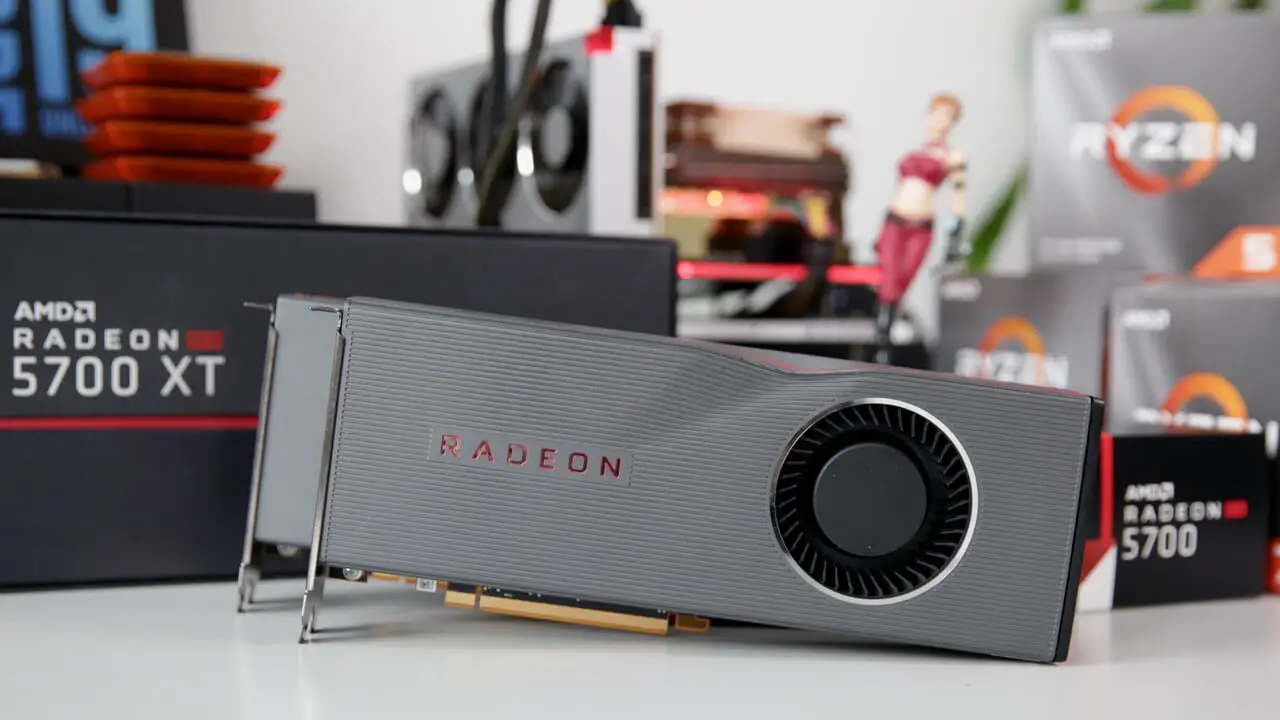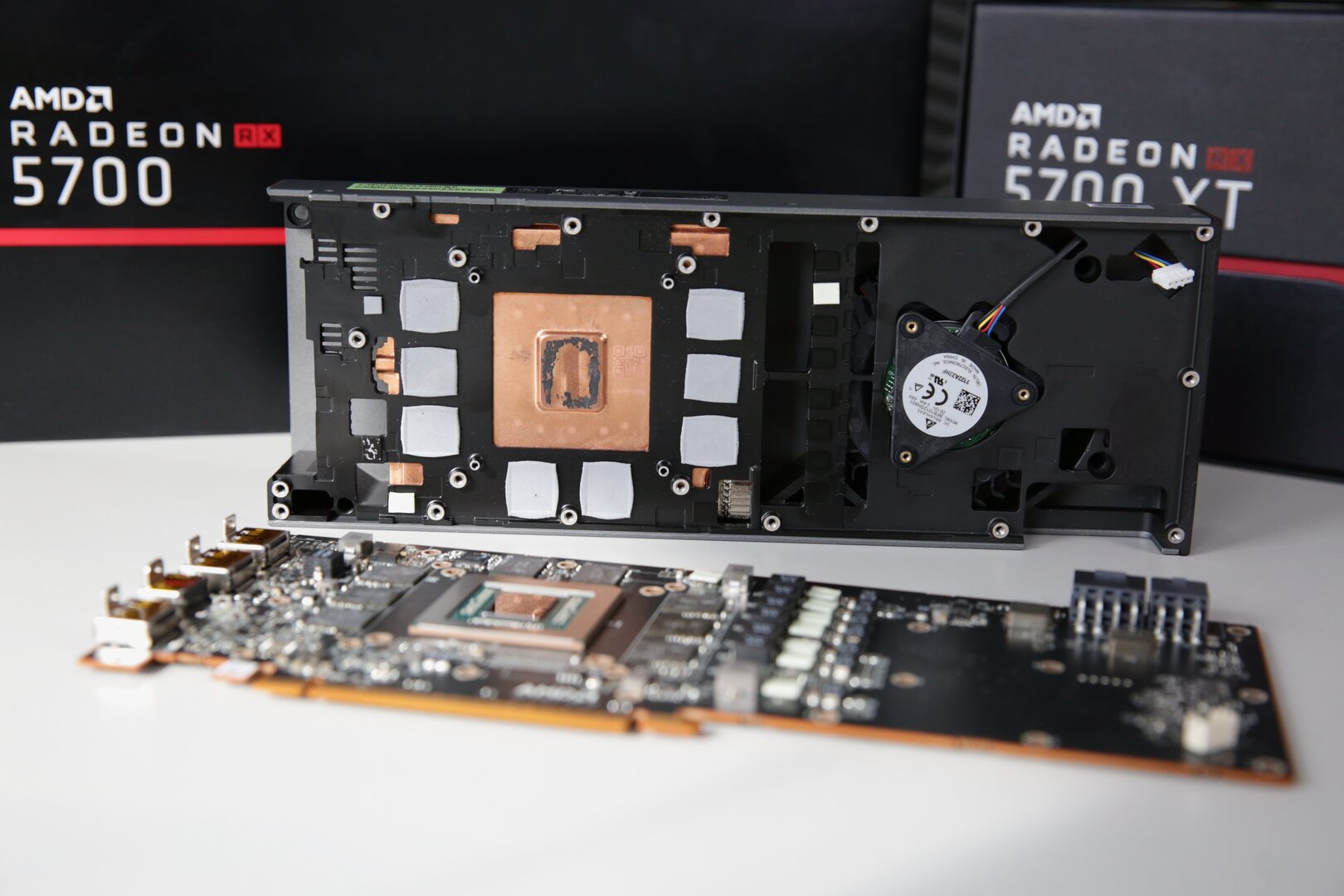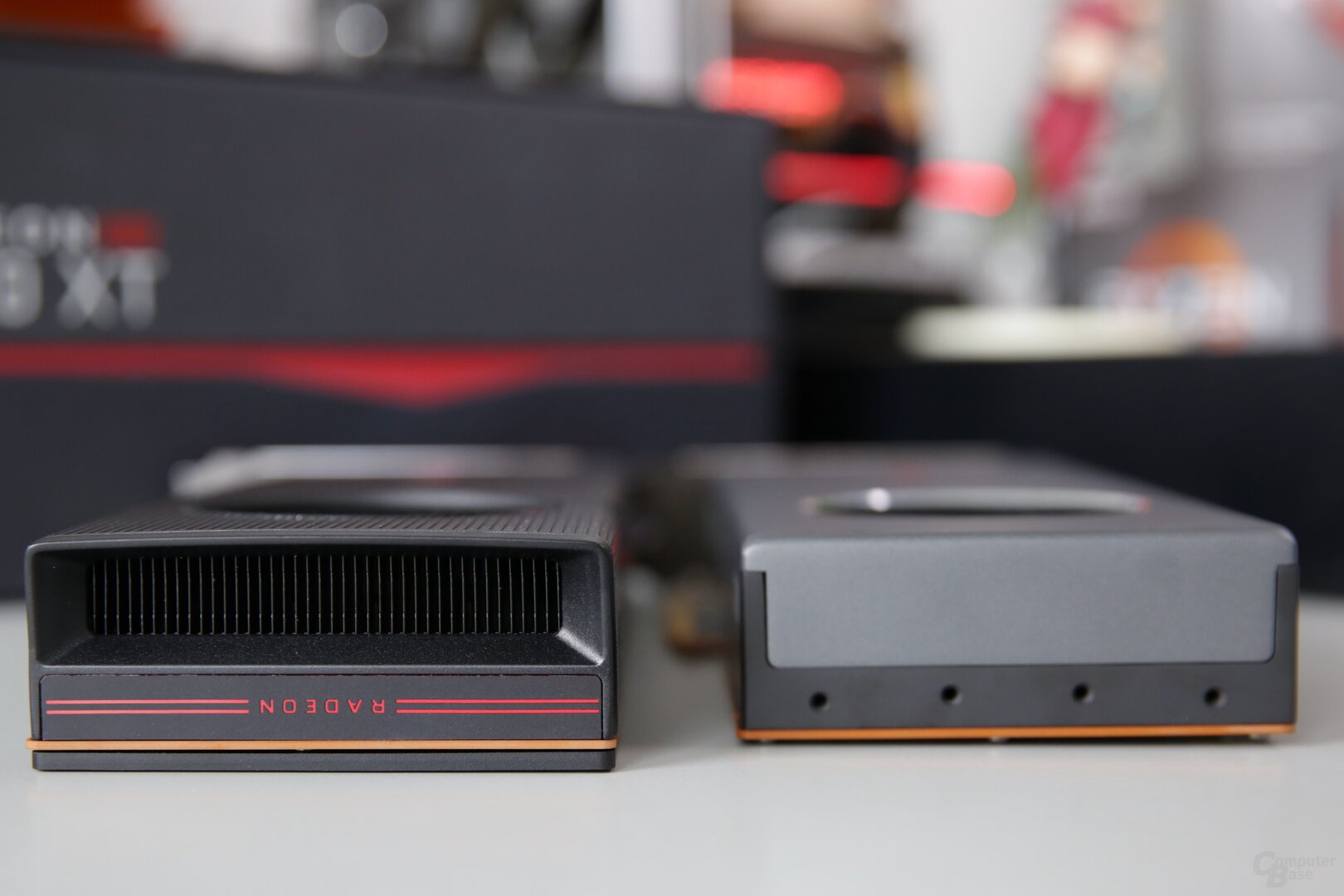tl; dr With the Radeon RX 5700 and the Radeon RX 5700 XT, the navigation GPU with RDNA architecture takes the stage. The new stage of expansion is significantly improved compared to the previous GCN. Navi does not quite come close to Nvidia's Turing competition despite 7 nm, but compensates for this with a lower price.
Update 07/09/2019 11:56 a.m.
The Radeon RX 5700 and Radeon RX 5700 XT have been AMD's most important graphics cards for ages, and that's because of the GPU. After more than seven years, "Navi" no longer relies on the GCN architecture started with Tahiti, but uses the successor "Radeon DNA", which is said to work significantly faster. The new graphics cards thus set a benchmark for the direction in which the Radeon series will develop in the future.
Radeon RX 5700 and 5700 XT with RDNA for gamers
AMD has developed RDNA according to its own information specifically with a view to games and is therefore taking a slightly different direction than the predecessor GCN, which is known as "Parallel Monster“Very well suited for compute, but not so well harmonized with games in the later iterations. Navi, however, is already set for the new Xbox Scarlett and PlayStation 5.
The Radeon RX 5700 (XT) with Navi-10 GPU has been developed as a middle class product and will replace the Radeon RX Vega, formerly the upper class, in both versions. If you want to have a high-end product from AMD, however, according to current information, you have to wait until next year. Then comes RDNA 2 with ray tracing support, which is not yet available in the current version of RDNA.
AMD has a suggested retail price of 369 euros for the Radeon RX 5700, the Radeon RX 5700 XT costs 419 euros. The two new Radeons are priced below Nvidia's new opponents: GeForce RTX 2060 Super and GeForce RTX 2070 Super (test).
The following test shows whether the price advantage in connection with RDNA and its performance, energy efficiency and new or changed features is sufficient to survive against the Turing offshoots.
Both the Radeon RX 5700 and the Radeon RX 5700 XT rely on the Navi 10 GPU, which is manufactured using the modern 7 nm process at TSMC, is 251 mm² in size and consists of 10.3 billion transistors. Navi 10 is about half the size of Vega 10, has almost 20 percent fewer circuits and is still said to achieve better performance in games.
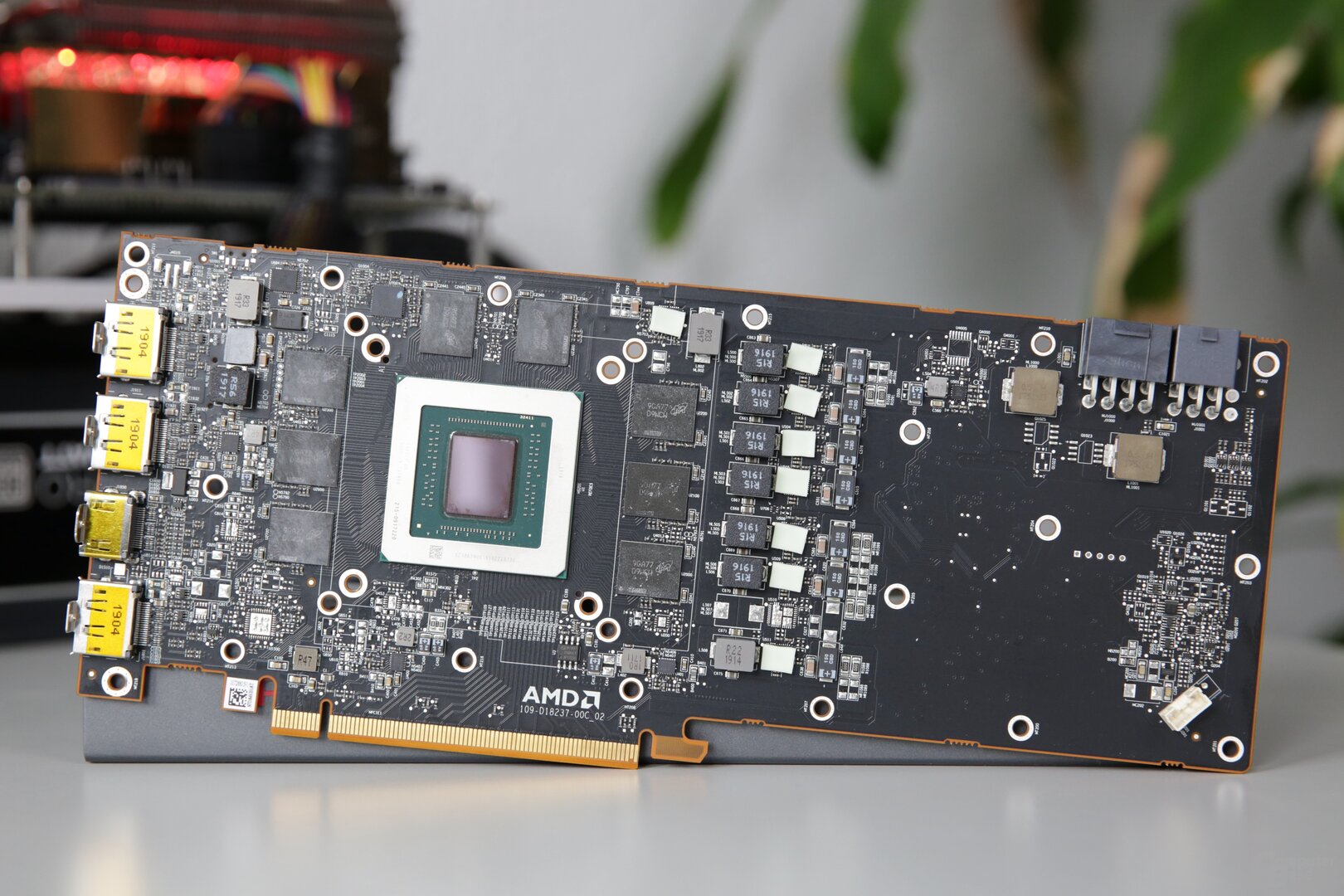
Navi 10 has 40 compute units with 64 ALUs each and thus 2,560 shader units. These are all active on the Radeon RX 5700 XT, the Radeon RX 5700 does without four compute units, so there are 2,304 ALUs. Compared to Vega 10, there are almost 38 percent fewer ALUs. Since the clock rates are only slightly different, the higher performance is only achieved through the improved RDNA architecture. As with Vega, each Navi-10-ALU can calculate "Half Precision" (FP16) with twice the power. Double Precision (FP64) can be accelerated in a ratio of 1:16.
Both Radeon RX 5700 are identical in terms of memory
There is less news to report about the storage interface. Navi 10 relies on four 64-bit controllers and thus a 256-bit interface. This supports HBM 2 and GDDR6, but both navigation products use GDDR6 at AMD for the first time for price reasons. The Radeon RX 5700 and Radeon RX 5700 XT are configured with the same memory. The interface is fully activated, the memory expansion is 8 GB GDDR6 and the memory clock (as with the competition) is 7,000 MHz. The storage bandwidth of 448 gigabytes per second is around seven percent less than that of Vega with HBM 2.
The game clock is an average turbo
Speaking of clock rates: AMD has introduced a new clock on Navi, which like Nvidia's typical boost is a "fictitious" clock. There is still a base clock and a maximum turbo clock. But the "game clock" now specifies which clock is to be expected when playing. According to AMD, the game clock is cautious, usually the frequency should be higher. The base clock of the new graphics cards is 1,465 MHz (RX 5700) or 1,605 MHz (RX 5700 XT), the game clock is 1,625 MHz or 1,750 MHz and the maximum turbo is 1,725 MHz or 1,905 MHz.
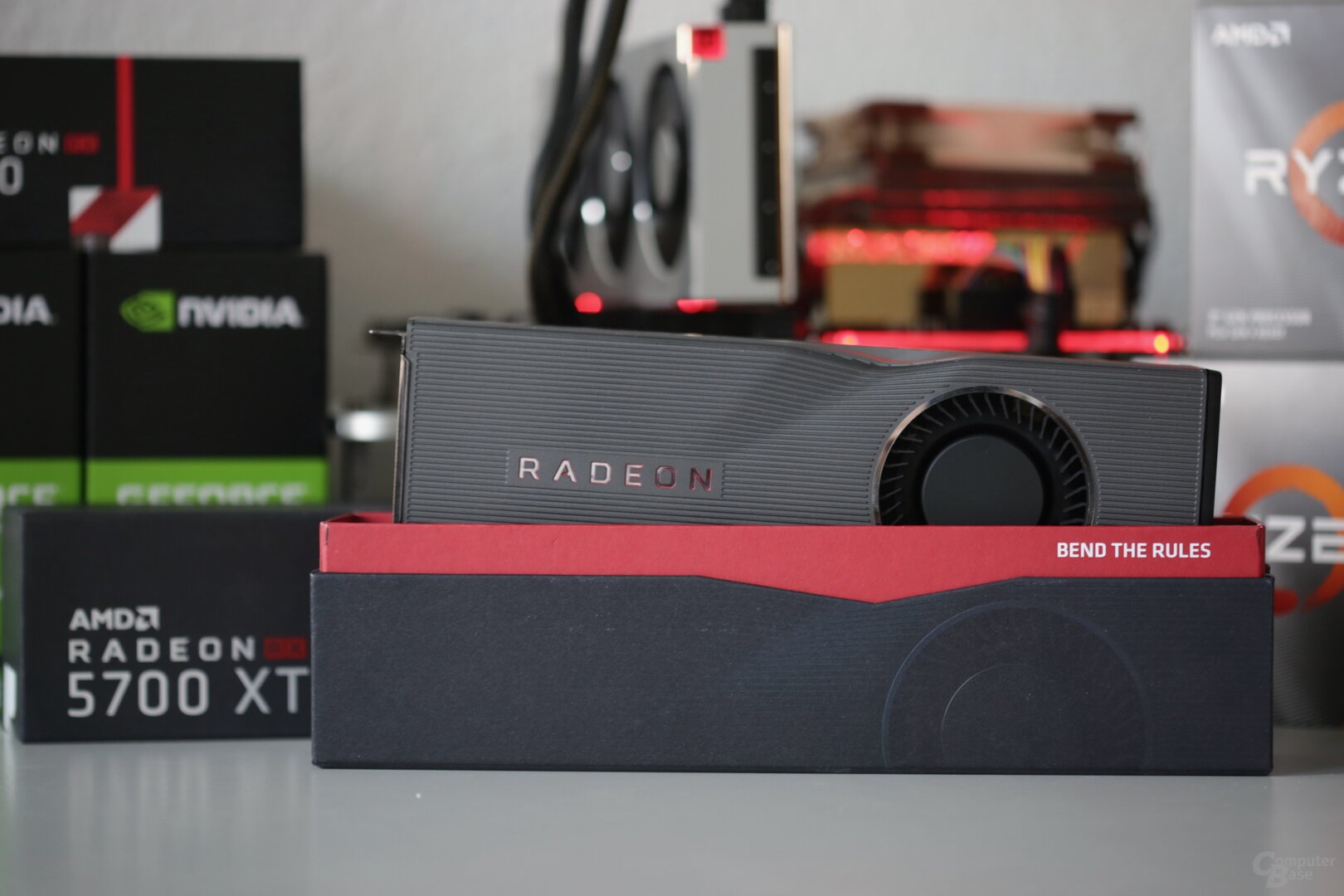
In contrast to Vega, AMD no longer specifies maximum power consumption for the GPU for the new graphics cards, but only a "typical board power", which is what the entire graphics card should consume. The Radeon RX 5700 has a value of 185 watts, the Radeon RX 5700 XT has 225 watts. According to external tools such as GPU-Z, the GPUs require 155 watts or 185 watts. The editorial team will determine what this means in practice later in the test.
The first consumer graphics card with PCIe 4.0
It is worth noting that Navi 10 is the first consumer GPU that can handle PCIe 4.0. So far only Vega 20 has been able to do this, but the Radeon VII equipped with it has been throttled to PCIe 3.0. On the other hand, the twice as fast interface is activated on the Radeon RX 5700 (XT). So far, this can only be used on the new X570 mainboards in combination with a new Ryzen 3000 – AMD has presented both in parallel with the navigation system.
- AMD Ryzen 3000 in the test: This is the crowning glory
It is currently not to be assumed that players can benefit from this in the short term. However, the effects in everyday life to release the embargo could not yet be tested. Further technical details on RDNA and Navi can be found in the introductory article of the Radeon RX 5700 and Radeon RX 5700 XT.
Radeon RX 5700 and 5700 XT from AMD in detail
The Radeon RX 5700 and the Radeon RX 5700 XT will initially only be available as reference designs, either at AMD itself in its own online shop or from the board partners in retail trade. They are manufactured by PowerColor. Partner cards are not expected to follow until August.
The reference design of both graphics cards is very similar, but not exactly identical. The same dual-slot cooler with radial fan is used for both graphics cards, only the metal cover of the XT variant is optically more unusual and is open at the end. The PCB with 8 GB GDDR6 each is the same for both graphics cards.
The 27.5 cm high and 11 cm wide navigation accelerators fit easily into any modern housing. For the PCB, AMD relies on a digital 7-phase power supply, which should be well suited for overclocking. The cooler itself should also be able to cope with it – at the expense of volume.
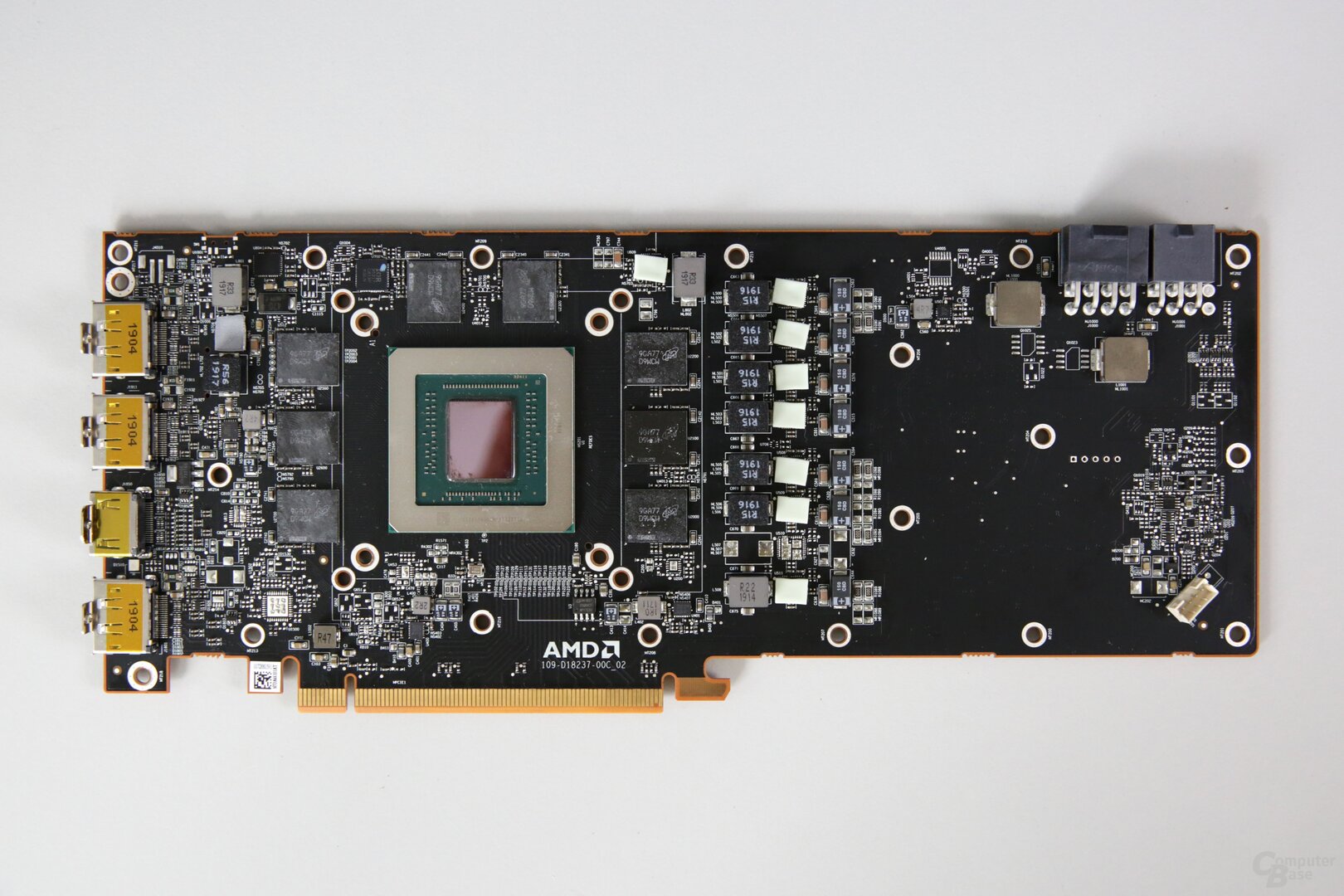
For this, AMD installs a vapor chamber, which, however, does not take up the entire card length as with Nvidia's Founders Edition, but is significantly smaller. It sits over the Navi-10 GPU, the heat transfer takes place with the help of a graphite pad (test). The heat is released into the air via a large aluminum radiator. The Radeon RX 5700 XT also has a backplate.
The radial fan itself has a diameter of 75 mm. On the Windows desktop, it works at significantly less than 1,000 revolutions, but the graphics card does not work silently with it.
The power supply is the same for XT and Non-XT
Both the Radeon RX 5700 and the Radeon RX 5700 XT require a six-pin and an eight-pin power connector, although the typical board power with 185 watts and 225 watts is very different and the non-XT also with a single eight -Pin connector would have been feasible. But there is hardly any overclocking potential.
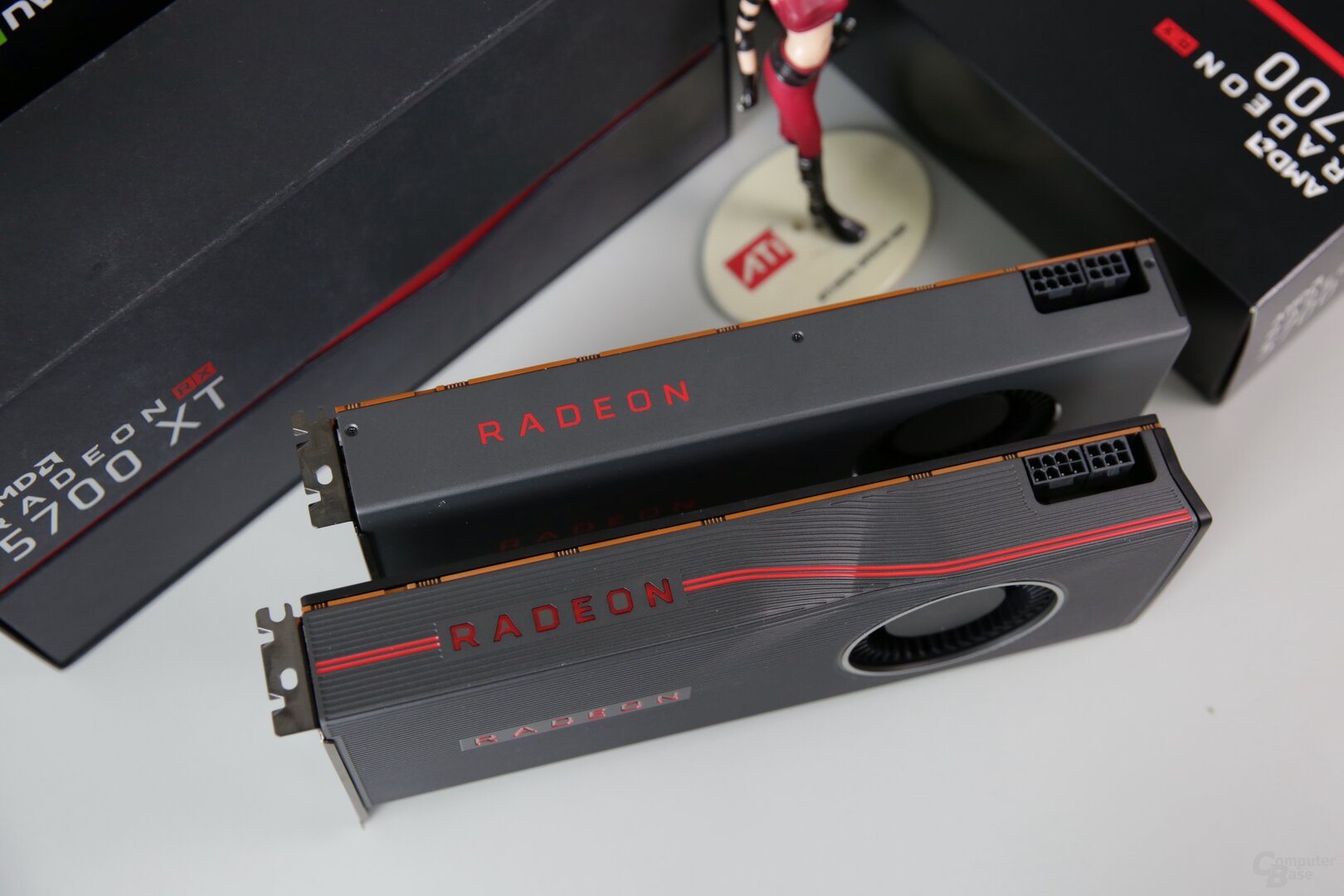
Neither graphics card has any special features such as RGB lighting. The Radeon RX 5700 XT has (at least) red illuminated Radeon lettering, while the Radeon RX 5700 is completely unlit.
DisplayPort 1.4 with DSC for high-resolution monitors
Both graphics cards can control monitors via three DisplayPort 1.4 connections, which can also handle DSC compression. These are the first Radeon graphics cards to master this. However, the first monitors with support for DSC via DisplayPort 1.4 are still waiting. There is also an HDMI 2.0b connection. On the other hand, AMD does not use VirtualLink for VR glasses – even if Navi 10 supports VirtualLink.
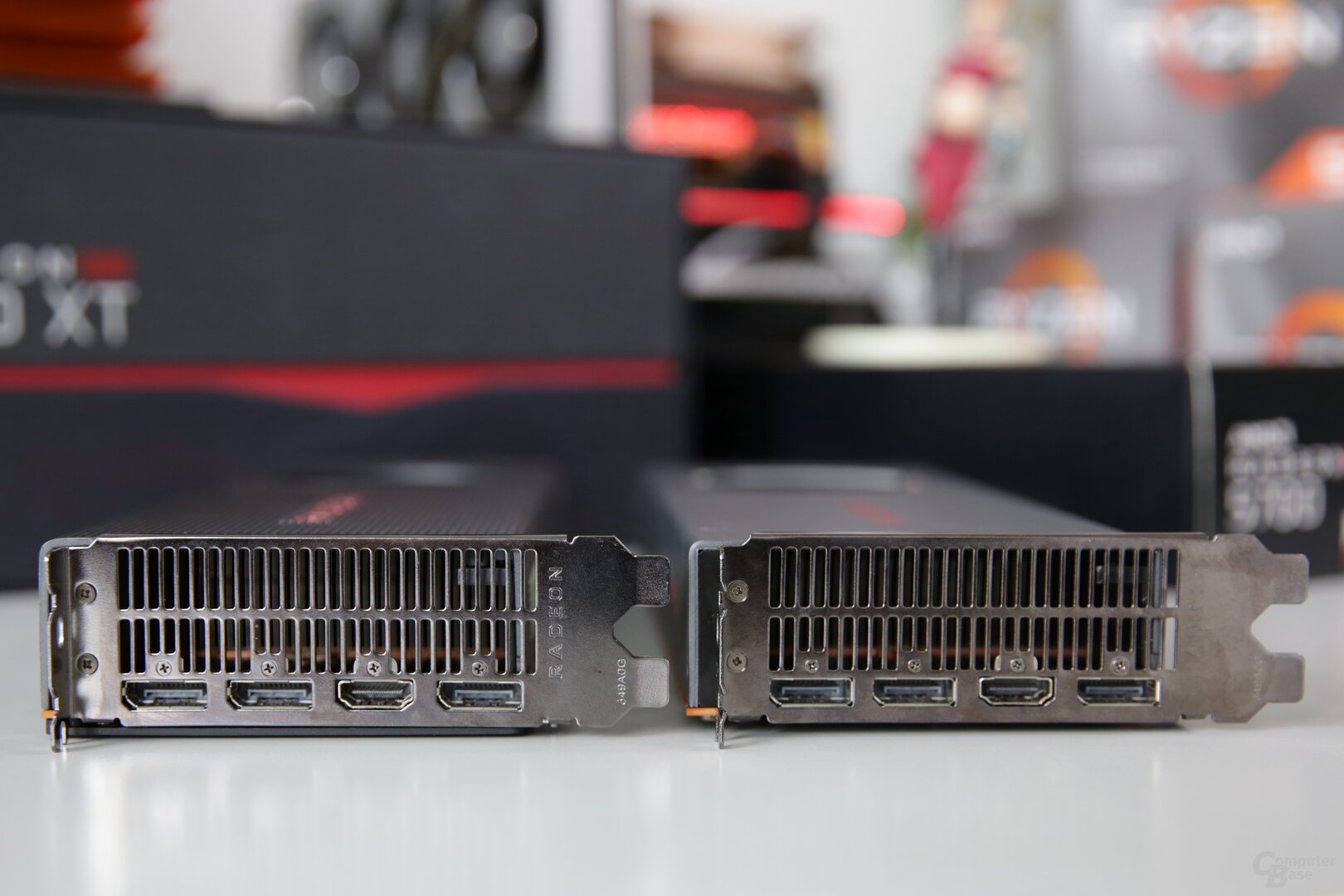
Overview of technical data
On your own account: you read this test with activated AdBlocker? Creating it required everything from us to prepare as much information as possible for you. We would therefore be happy if you set up an exception for BitcoinMinersHashrate in the AdBlocker or if you subscribe to BitcoinMinersHashrate to support us financially. Here we explain which ads we have and why. There are no annoying popups. Promised! And now have fun reading on.
On the next page: The clock rates and benchmarks in Full HD, WQHD and Ultra HD





